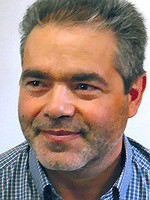resumo
A full understanding of the structural glass variations and of the nucleation and growth of crystalline phases in glass-ceramics (GCs) induced by compositional changes is highly relevant for applications such as sealants for solid oxide fuel cells, bio- and dental materials, and photonics. Systematic substitution of Ca with Sr in diopside (Di-CaMgSi2O6) has a significant impact on the crystalline-phase assemblage after heat treating at 850 degrees C for 500 h. A high percentage of Di crystallized from Sr-free glass; however, with increasing Sr content the tendency toward crystallization decreased, and Sr-akermanite (Sr-Ak) was preferentially crystallized. In this study, the structural transformations in the Di-based-GC system upon the substitution of calcium with strontium have been examined by X-ray powder diffraction (XRD), Si-29 and Al-27 magic angle spinning (MAS)-nuclear magnetic resonance (NMR), and Raman spectroscopies. XRD Rietveld refinement results indicate that up to a maximum of similar to 25 at. % of Sr occupies the Ca site of the Di structure. Al-27 MAS NMR spectra reveal that most of the Al exists in amorphous glassy phase after crystallization. Measured mean quadrupolar coupling constant values augment with increasing Sr content, indicating an increase in order in the glassy phase, which is manifested by a strong preference of Mg2+ for nonbridging oxygens (NBO), resulting in the formation MgO4 tetrahedra. At higher Sr substitution levels (>50%), the decrease in Mg2+ coordination from six to four is evident from the decrease in average Mg-O bond lengths and the systematic variation in intensity of characteristic Mg-O Raman vibrational bands.
palavras-chave
RESOLUTION SI-29 NMR; SOLID-STATE NMR; SILICATE-GLASSES; FUEL-CELLS; RAMAN-SPECTROSCOPY; BIOACTIVE GLASSES; LOCAL-STRUCTURE; CA-MG; SUBSTITUTION; JOIN
categoria
Chemistry; Science & Technology - Other Topics; Materials Science
autores
Reddy, AA; Tulyaganov, DU; Mather, GC; Rodriguez-Lopez, S; Das, S; Pascual, MJ; Munoz, F; Siegel, R; Senker, J; Ferreira, JMF
nossos autores
agradecimentos
This study was financially supported by the CICECO, University of Aveiro, by the JECS-trust frontiers of research (201242-2), and by the FCT, Portugal (PTDC/CTM-CER/114209/2009). A.A.R. thanks FCT for a doctoral grant (SFRH/BD/89915/2012).




